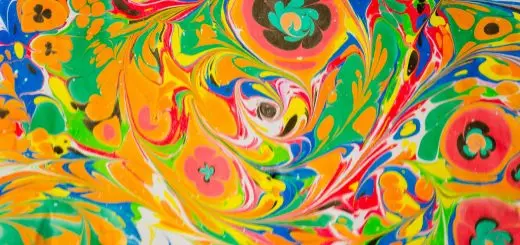Taoist Art and Culture: Expressions of the Way

Looking for more amazing products? Check out our online store and explore our collection here! Happy shopping!
Before diving in, please note: This post is for informational purposes only. If you’d like to know more about how we approach topics, feel free to check out our friendly Disclaimer Page.
Hey there, amazing readers! 
We’re committed to delivering quality posts, and your support (even just sticking around despite the ads) means everything to us. So, bear with us, and thanks for helping us keep the good vibes rolling. Now, on to the fun stuff!
TRANSLATE BUTTON AT THE END OF THE ARTICLE
A Quick Overview
Taoism, also known as Daoism, is an ancient Chinese philosophy and religion that dates back over 2,000 years.
It emphasizes living in harmony with the Tao, which is often translated as "the Way." Taoism focuses on simplicity, naturalness, and spontaneity, seeking to find balance and unity in all aspects of life.
In addition to its philosophical teachings, Taoism also has a rich tradition of art and culture that reflects its core beliefs and values.
Introduction to Taoism
Taoism is a spiritual tradition that originated in China and is based on the teachings of Laozi, an ancient Chinese philosopher.
It emphasizes the concept of the Tao, which is often described as the fundamental essence of the universe.
Taoists believe in living in harmony with the Tao by embracing simplicity, humility, and balance.
Taoism also incorporates elements of traditional Chinese religion, including ancestor worship and belief in deities.
Understanding Taoist Philosophy
Taoist philosophy is centered around the idea of the Tao, which is the source of all creation and the underlying principle of the universe.
Taoists believe in the importance of living in accordance with the natural order of the Tao, which involves letting go of ego, desire, and attachment.
Taoist philosophy emphasizes the value of simplicity, spontaneity, and balance, as well as the interconnectedness of all things in the universe.
Influence of Taoism on Art
Taoism has had a profound influence on Chinese art, inspiring artists to create works that reflect the principles of the Tao.
Taoist art often emphasizes simplicity, harmony, and nature, with a focus on capturing the essence of the natural world.
Many Taoist artworks feature landscapes, animals, and symbols that are imbued with spiritual meaning and symbolism.
Key Themes in Taoist Art
Some of the key themes in Taoist art include the interconnectedness of all things in the universe, the cyclical nature of life and death, and the importance of harmony and balance.
Taoist art often seeks to convey a sense of peace, tranquility, and spiritual enlightenment, inviting viewers to contemplate the deeper truths of existence.
Nature plays a prominent role in Taoist art, with many works depicting mountains, rivers, and forests as symbols of the Tao.
Symbolism in Taoist Art
Symbolism plays a significant role in Taoist art, with many artworks featuring symbols that have specific meanings in Taoist philosophy.
For example, the yin and yang symbol represents the balance of opposites, while the dragon symbolizes power, strength, and enlightenment.
Cranes are often depicted in Taoist art as symbols of longevity and immortality, while bamboo represents resilience and flexibility.
Development of Taoist Culture
Over the centuries, Taoism has developed a unique culture that includes a wide range of practices, rituals, and traditions.
Taoist culture encompasses art, music, dance, literature, and architecture, all of which reflect the values and beliefs of Taoism.
Traditional Taoist culture places a strong emphasis on living in harmony with nature, cultivating inner peace and wisdom, and seeking spiritual enlightenment through meditation and contemplation.
Traditional Taoist Practices
Traditional Taoist practices include meditation, qigong (breathing exercises), tai chi (a form of martial arts), and various rituals and ceremonies aimed at connecting with the divine.
Taoists also engage in practices such as feng shui (the art of arranging living spaces harmoniously) and divination (the practice of seeking guidance from the spiritual realm).
These practices are designed to help individuals align themselves with the Tao and cultivate a sense of spiritual well-being.
Taoist Influence on Literature
Taoism has had a significant influence on Chinese literature, inspiring poets, writers, and scholars to create works that reflect Taoist themes and philosophy.
Many famous Chinese literary works, such as the Tao Te Ching and the Zhuangzi, are influenced by Taoist teachings and ideas.
Taoist literature often explores themes of nature, simplicity, and the pursuit of enlightenment, offering readers profound insights into the nature of existence and the human experience.
Taoist Artifacts and Art Forms
Taoist art encompasses a wide range of artifacts and art forms, including paintings, sculptures, calligraphy, ceramics, and textiles.
Taoist artifacts often feature symbols and motifs that are associated with Taoist philosophy, such as dragons, cranes, lotus flowers, and mountains.
Taoist art forms, such as landscape painting and poetry, seek to capture the beauty and harmony of the natural world, inviting viewers to contemplate the mysteries of the universe.
Contemporary Taoist Art Movements
In recent years, there has been a resurgence of interest in Taoist art and culture, with contemporary artists and scholars exploring new ways to interpret and express Taoist themes.
Contemporary Taoist art movements seek to bridge the gap between traditional Taoist practices and modern artistic techniques, blending ancient wisdom with innovative approaches to creativity.
These movements aim to keep the spirit of Taoism alive and relevant in the modern world, inspiring audiences to reflect on the timeless wisdom of the Tao.
Preservation of Taoist Culture
Efforts are being made to preserve and promote Taoist culture, including the conservation of Taoist temples, rituals, and artifacts.
Organizations and institutions dedicated to the study and practice of Taoism are working to ensure that its rich heritage is passed down to future generations.
By safeguarding Taoist art, literature, and traditions, these efforts help to maintain the integrity and authenticity of Taoist culture for years to come.
Impact of Taoism on Global Art Trends
Taoism has had a lasting impact on global art trends, influencing artists and designers from around the world to incorporate Taoist themes and symbols into their work.
The principles of balance, harmony, and simplicity found in Taoist art have resonated with audiences across cultures, inspiring a renewed interest in Eastern philosophy and aesthetics.
As Taoism continues to inspire creativity and innovation in the arts, its influence on global art trends will likely continue to grow in the future.
Conclusion
Taoist art and culture are rich expressions of the ancient philosophy and teachings of Taoism.
From traditional practices and rituals to contemporary art movements, Taoism has left a lasting imprint on Chinese art, literature, and creative expression.
By exploring the key themes, symbolism, and influences of Taoism on art and culture, we gain a deeper understanding of the profound impact that this ancient philosophy has had on global artistic trends.
As efforts to preserve and promote Taoist culture continue, its timeless wisdom and beauty will continue to inspire and enlighten audiences for generations to come.

The Enlightenment Journey is a remarkable collection of writings authored by a distinguished group of experts in the fields of spirituality, new age, and esoteric knowledge.
This anthology features a diverse assembly of well-experienced authors who bring their profound insights and credible perspectives to the forefront.
Each contributor possesses a wealth of knowledge and wisdom, making them authorities in their respective domains.
Together, they offer readers a transformative journey into the realms of spiritual growth, self-discovery, and esoteric enlightenment.
The Enlightenment Journey is a testament to the collective expertise of these luminaries, providing readers with a rich tapestry of ideas and information to illuminate their spiritual path.
Our Diverse Expertise
While our primary focus is on spirituality and esotericism, we are equally passionate about exploring a wide range of other topics and niches 

To ensure we provide the most accurate and valuable insights, we collaborate with trusted experts in their respective domains 
Our blog originally focused on spirituality and metaphysics, but we’ve since expanded to cover a wide range of niches. Don’t worry—we continue to publish a lot of articles on spirituality! Frequently visit our blog to explore our diverse content and stay tuned for more insightful reads.
Hey there, amazing reader! 
Check out our store here and take a peek at some of our featured products below! Thanks for being awesome!











